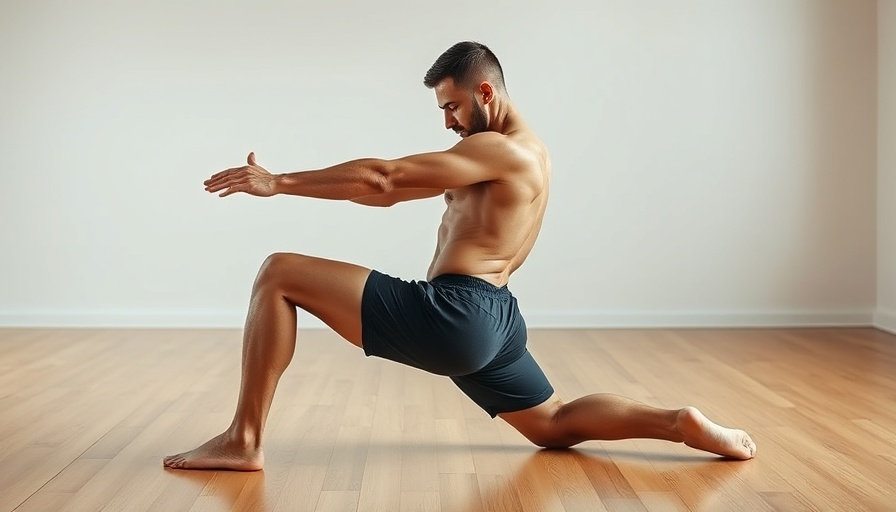
Tight Hips? Discover How to Unlock Mobility with Simple Routines
For those busy adults trying to maintain energy and health while juggling daily responsibilities, tight hips can pose a significant challenge. Sitting for long periods, whether at a desk job or during commutes, can lead to stiffness in the hip joints. Ensuring adequate mobility in this vital area of the body is essential not just for physical fitness but also for improving overall quality of life.
Understanding Hip Mobility and Its Importance
Hip mobility is more than just flexibility; it plays a crucial role in your body's overall movement and stability. When the hips are locked up, it can lead to discomfort and compensatory movements that place undue stress on other parts of the body, such as the lower back. Understanding the importance of hip mobility helps individuals appreciate the need for incorporating specific exercises into their routines, especially if they spend much of their day seated.
3 Proven Routines for Enhanced Hip Mobility
Here are three effective routines to help unlock your tight hips:
- Hip Flexor Stretch: Begin with a lunge position, keeping the front knee directly over your ankle. Gently push your hips forward to feel a stretch in the hip flexors of the back leg. Hold this position for 30 seconds on each side. This exercise opens up the front of the hips, relieving tension.
- Figure Four Stretch: Lie on your back and cross your right ankle over your left knee. Grasp the back of your left thigh and pull it towards your chest. This stretch releases the piriformis and alleviates tightness in the glutes. Hold each side for 30 seconds.
- 90/90 Stretch: Sitting on the floor, position your legs in a 90-degree angle - one knee bent in front and the other at your side. Lean your torso towards the front leg to enhance the stretch. Switch sides and repeat for a comprehensive hip opening experience.
Real-Life Benefits of Unlocking Your Hips
Regularly practicing these stretches not only enhances flexibility but also boosts overall physical performance. Greater hip mobility can improve your squatting mechanics, running form, and even day-to-day tasks like picking up items. You'll notice an increase in energy levels, a decrease in pain, and an overall better posture, which can further lead to enhanced productivity throughout your day.
Aligning Movement with Mindfulness
Connecting movement with mindfulness enhances the effectiveness of these routines. Instead of seeing hip mobility merely as a physical task, treat it as a moment for self-care. Take deep breaths during each stretch, visualizing the release of tension. This not only calms the mind but increases focus and can enhance the outcomes of the movement.
Overcoming Common Barriers to Mobility
Many adults feel discouraged by their levels of flexibility. Understand that hip mobility varies for everyone and that improvement takes time. Embrace a growth mindset, recognizing that each stretching session brings you one step closer to better movement. Additionally, consider incorporating these routines into your daily activities—for example, perform them while watching TV or listening to music.
Empowering Movement for a Healthier Lifestyle
Incorporating hip mobility exercises into your daily life is key to promoting longevity and vitality. As you commit to incorporating these sessions, you'll establish a healthier relationship with your body and experience the daily benefits of improved physical functionality.
Remember, every journey begins with a single step, and taking the time to focus on your hip mobility is an invaluable investment in your health and well-being.
Ready to unlock your hips and transform your daily routine? Start with these exercises and watch how they can enhance your lifestyle!
 Add Row
Add Row  Add
Add 




Write A Comment